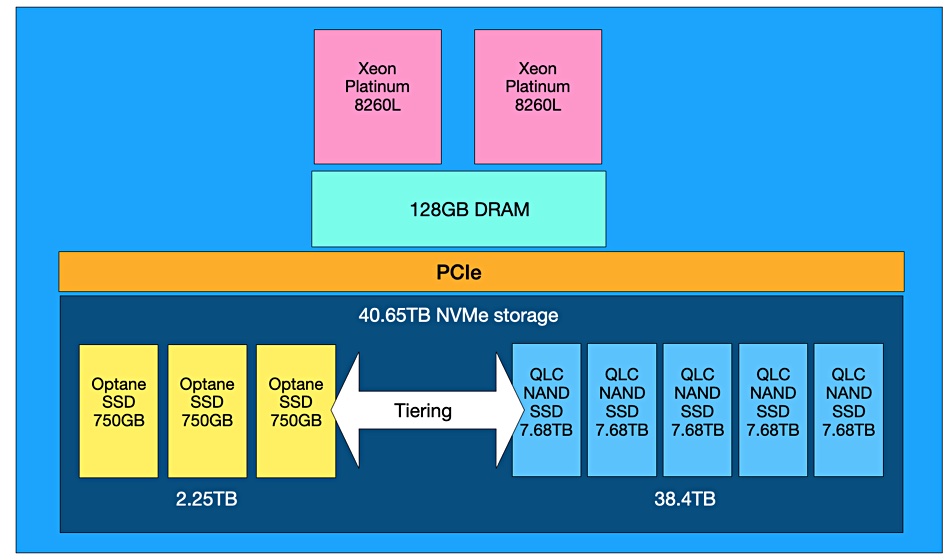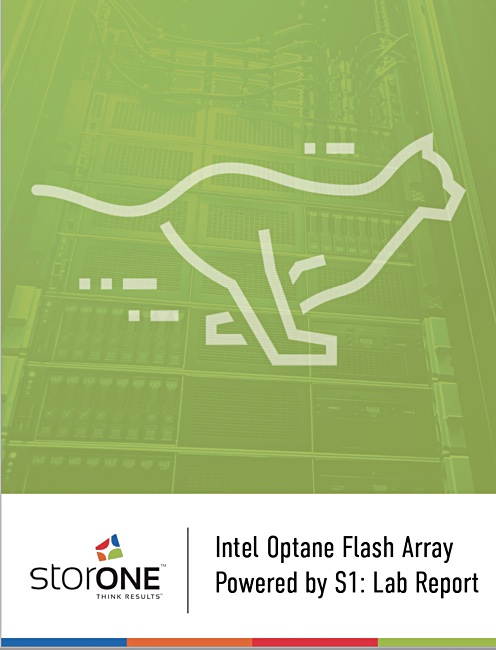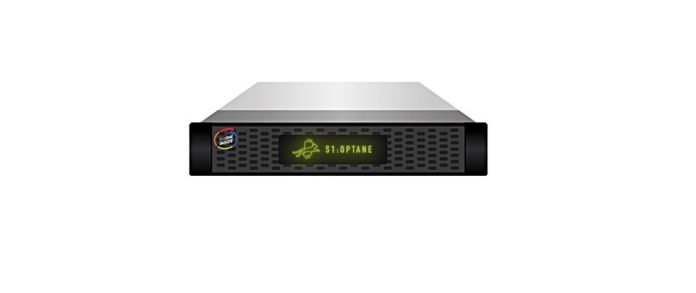StorONE, the data storage startup, has crafted a super all-flash array by twinning Optane and QLC Flash SSDs in a 2-tier, 40TB, dual Xeon SP server chassis.
The Optane Flash Array (OFA), runs StorOne’s S1 Enterprise Storage Platform software and is intended as a replacement upgrade for first generation flash arrays.
StorONE said the OFA, with its Optane-QLC combination, should cost less than a standard all-flash array but delivers more performance at equivalent capacity levels.
The design is akin to taking Intel’s H10 Optane+QLC flash drive and implementing its basic hardware scheme at array level. We described it earlier this month and can now provide more details.

The initial product chassis contains two storage tiers; three Optane DC P4800X 750GB SSDs for performance and five Intel D5-P4320 NVMe 7.68TB QLC SSDs for capacity.

The Optane drives form a performance tier and eliminate the need for cache in memory. They also stack up random writes and send them to the QLC tier as a small number of sequential writes which are optimised for the QLC NAND page size. This prolongs SSD endurance.
The S1 software promotes data from the QLC tier to the Optane tier when it identifies a read performance advantage.
StorONE OFA supports configurations with 3, 4, 6 or 8 Optane drives and from 4 to 16 Intel QLC SSDs. Scaling Optane drives increases performance. Scaling the QLC SSDs increases capacity.
Performance
A StorONE Intel Optane Flash Array lab report details some performance numbers.

This OFA configuration, with its eight drives, delivers over one million read IOPS. Benchmarks include:
- 1.05 million random read IOPS, 0.14ms latency
- 310,000 random write IOPS, 0.6ms latency
- 10GB/sec sequential read throughput
- 2.8GB/sec sequential write throughput
How does this compare to a non-Optane StorONE all-flash array?
In September 2018 StorONE tested its S1 system using HGST SAS SSDs inside a Western Digital 2U24 chassis and reported 1.7 million random read 4K IOPS, delivered at less than 0.3 ms latency. The system provided 15GB/sec sequential reads, and 7.5GB/sec sequential writes.
StorONE’s George Crump told us the SAS SSD S1 array, with its 24 drives, exceeded the OFA’s bandwidth and IOPS numbers because of its ability to drive more IO with drive parallelism. However, the eight-drive OFA had lower latency than the SAS system.
We think a 24-drive OFA, with eight Optane drives and 16 NVMe QLC SSDs, would deliver a larger number of IOPS and greater bandwidth than the S1 24-drive SAS system. StorONE said its system delivers linear scalability, so we this configuration could deliver 3 million IOPS and 30GB/sec sequential read throughput.
Blocks & Files expects the S1 OFA to be made available in the next few weeks. We might ponder the idea of an all-Optane OFA. This would be suited for extreme performance use cases – but be hellish expensive.








